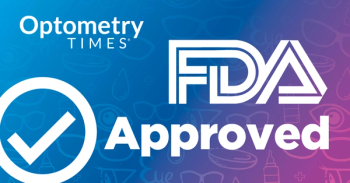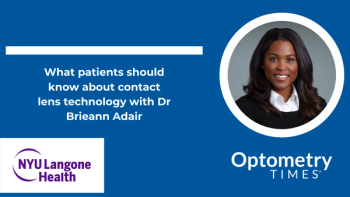
AAOpt 2025: Diagnosing keratoconus and its imposters
Michelle Chung, OD, FAAO, FSLS, highlights the subtle signs of this progressive eye condition and the importance of differential diagnosis to prevent long-term vision loss.
Note: Video captions are auto-generated with the assistance of AI and may contain errors.
Michelle Chung, OD, FAAO, FSLS, an optometrist from Princeton Optometry, in Princeton, New Jersey, delivered a compelling presentation on the critical importance of early keratoconus detection. Her primary focus is raising awareness about identifying subtle signs of this progressive eye condition to prevent long-term vision loss.
Keratoconus is a corneal disorder that often goes undiagnosed for years, silently progressing and potentially causing permanent vision damage. Chung emphasized that accurate and early diagnosis is crucial, as it determines the most appropriate treatment strategy and patient expectations. Her recommended diagnostic approach involves multiple methods, with corneal tomography being her preferred tool. This technology provides a comprehensive view of both the front and back of the cornea, allowing practitioners to detect early changes that might be missed by traditional examination methods. Other diagnostic techniques include retinascopes, topographers, auto-refractors, and slit lamps, complemented by thorough patient history.
Key diagnostic signs include scissoring reflex, distorted mires, clinically non-inflammatory corneal thinning, and corneal protrusion. Chung notes that while clinical inflammation might not be visible, cellular-level changes can be detected through advanced imaging. In her practice, Chung advocates for tomography scans on every patient, even those with seemingly perfect 20/20 vision. She shared an example of a patient initially diagnosed with astigmatism who was later found to have early keratoconus through detailed scanning. For practices without tomography equipment, she recommends building relationships with colleagues or refractive centers that can provide these specialized scans. The ultimate goal is to enable timely referrals for FDA-approved cross-linking treatments that can halt the progression of keratoconus.
By raising awareness and promoting early detection, Chung aims to empower eye care practitioners to recognize keratoconus and its similar conditions, ensuring patients receive appropriate care and protection for their eye health. Her presentation underscores the importance of proactive, comprehensive eye examinations in preserving long-term vision.
Newsletter
Want more insights like this? Subscribe to Optometry Times and get clinical pearls and practice tips delivered straight to your inbox.



















































.png)


